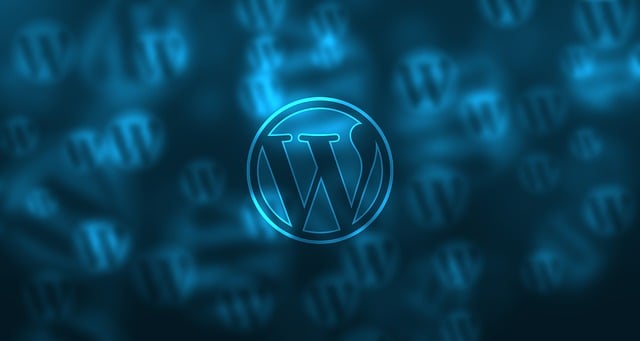Small businesses need a strong online presence, which is best achieved through well-designed and user-friendly websites. Key elements include simplicity, clarity, and accessibility, with fast loading times, mobile responsiveness, compelling visuals, and clear calls to action. Effective small business web design focuses on user experience, visual appeal, and brand storytelling, driving engagement and growth. Choosing the right platform (e.g., WordPress, Wix, Squarespace) balances aesthetics and business goals. Essential functionalities like product galleries, secure payment gateways, and SEO optimization enhance the customer experience. Best practices for UX include simplifying navigation, optimizing speeds, and ensuring mobile responsiveness. Budgeting varies based on complexity, with simple sites costing $500-$1,500 and e-commerce sites up to $5,000+. Regular content updates, concise language, and valuable information are crucial for maintaining user engagement and boosting online presence.
In today’s digital era, a robust online presence is non-negotiable for small businesses aiming to thrive. A well-designed website serves as your virtual storefront, attracting customers and driving sales. This article guides you through the essentials of small business web design, from understanding unique needs to choosing the right platform, essential features, UX best practices, cost considerations, and maintenance tips. Discover how professional web design can elevate your brand and boost online success with these invaluable insights tailored for small businesses.
Understanding Small Business Web Design Needs

Creating a strong online presence is vital for small businesses in today’s digital era. A well-designed and user-friendly website acts as a central hub, attracting customers, showcasing products or services, and building brand recognition. However, understanding the unique needs of small businesses is essential to crafting effective web design solutions.
Small business web design should focus on simplicity, clarity, and accessibility. Many small businesses operate with limited resources, so an intuitive navigation system, fast loading times, and mobile responsiveness are key. Incorporating compelling visuals, such as high-quality images or videos, can enhance the user experience while effectively communicating the brand’s story. Additionally, integrating clear calls to action encourages visitors to engage, whether it’s making a purchase, subscribing to a newsletter, or contacting the business for more information.
Key Components of an Effective Small Business Website

[ … [a … ) … … [ … ] … … [ … … … … … … … … … … … … … [ … … … … … … … … … … … … … … … … … … … … … … … … … … … … … … …
Benefits of Professional Web Design for Small Businesses

Professional web design plays a pivotal role in the success and growth of small businesses in today’s digital landscape. A well-crafted website is more than just an online presence; it serves as a powerful marketing tool, enhancing brand visibility and credibility. With a custom-built, visually appealing, and user-friendly site, small businesses can attract and engage their target audience effectively.
The benefits extend beyond aesthetics. A professionally designed website optimizes user experience, ensuring fast loading times and seamless navigation, which are crucial for retaining visitors and encouraging conversions. It also allows small businesses to showcase their products or services with clarity and sophistication, setting them apart from competitors. Search engine optimization (SEO) is another advantage; a strategically designed site can improve search rankings, making it easier for potential customers to discover the business online.
Choosing the Right Web Design Platform for Your Business

Choosing the right web design platform is a pivotal step for any small business looking to establish an online presence. It’s not just about aesthetics; the platform should align with your business goals, budget, and technical expertise. For instance, a content management system (CMS) like WordPress offers flexibility, a vast library of themes, and plugins that cater to specific business needs, making it a popular choice among small businesses. This user-friendly approach allows non-technical owners to manage their sites effectively.
On the other hand, modern web design platforms often provide all-in-one solutions, combining website building, hosting, and even e-commerce capabilities. Tools like Wix or Squarespace are known for their drag-and-drop interfaces, making site creation accessible without coding knowledge. These platforms are ideal for businesses seeking simplicity and quick setup, especially those with smaller budgets. However, as your business grows, you may need more advanced features that specialized platforms offer, ensuring scalability and adaptability in the long term.
Essential Features and Functions for Small Business Websites

When it comes to small business web design, several essential features and functions are crucial for a website’s success. Firstly, a user-friendly interface is paramount. Simple navigation, clear call-to-actions, and responsive design that adapts to various devices ensure your customers have a seamless experience, encouraging them to explore and engage with your brand.
Additionally, incorporating specific business functionalities is vital. This includes showcasing products or services through visually appealing galleries and detailed descriptions, integrating secure online payment gateways for e-commerce, and implementing contact forms and clear location information for better customer communication. SEO optimization should also be a key focus, ensuring your website ranks well in search engine results, thereby attracting more potential clients to your small business.
Best Practices for User Experience (UX) in Small Business Web Design

Creating a seamless user experience (UX) is paramount for any small business web design, as it ensures visitors stay engaged and convert into customers. Best practices involve simplifying navigation with clear menus and intuitive structures, ensuring fast loading times to avoid frustrating users, and optimizing the site for mobile viewing, given the majority of internet access occurs on smartphones. Incorporating high-quality visuals and compelling content enhances user interaction, while easy-to-use forms and calls-to-action (CTAs) guide visitors towards desired actions, be it making a purchase or subscribing to a newsletter.
Accessibility is also an integral part of modern UX design. Ensuring your small business web design is accessible to people with disabilities means incorporating features like alt text for images, keyboard navigation, and sufficient color contrast. These practices not only comply with legal requirements but also expand your potential customer base. A well-designed UX ultimately leaves a positive impression, encouraging repeat visits and fostering trust in your brand.
Cost Considerations: Budgeting for Web Design Services

When considering small business web design services, budgeting is a crucial aspect. The cost can vary widely depending on factors like complexity, features required, and the scope of work involved. Simple static websites offering basic information might range from $500 to $1,500, while more dynamic e-commerce sites with integrated payment gateways could cost anywhere from $2,000 to $5,000 or more. It’s essential for small business owners to define their goals and needs before beginning.
To manage costs effectively, communicate your budget clearly with potential designers. Many web design agencies offer flexible packages tailored to suit different budgets. Additionally, keeping content minimal yet engaging, avoiding unnecessary bells and whistles, and selecting a responsive design template can help lower expenses without compromising functionality or aesthetics.
Tips for Maintaining and Updating Your Small Business Website

Keeping your small business website up-to-date is essential for maintaining a strong online presence. Regularly review and update your content, ensuring it reflects your brand’s current offerings, services, and values. This simple step can significantly impact user experience and search engine optimization (SEO). Use clear, concise language and focus on providing valuable information that answers potential customers’ questions.
Implementing an effective maintenance strategy involves setting a schedule for reviewing and editing content, checking links to ensure they are functional, and optimizing images for faster loading times. Keep your design clean and user-friendly, incorporating any new trends while staying true to your brand identity. A well-maintained website not only keeps customers engaged but also encourages search engines to rank it higher, thereby increasing visibility for your small business web design services.
